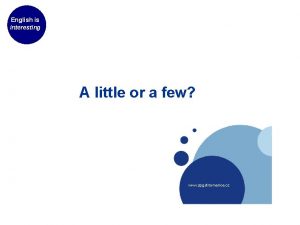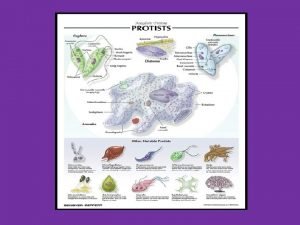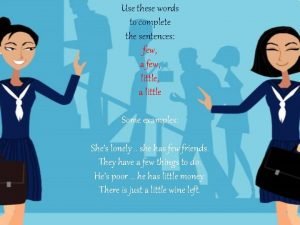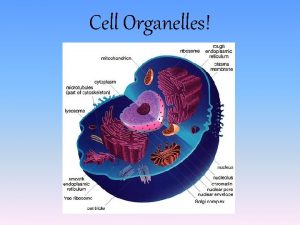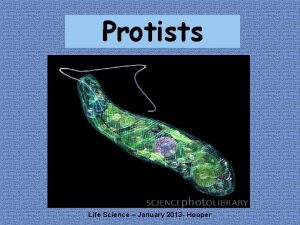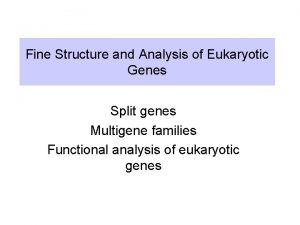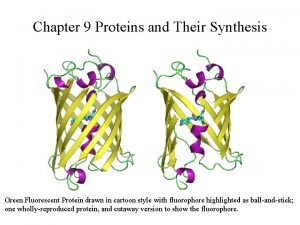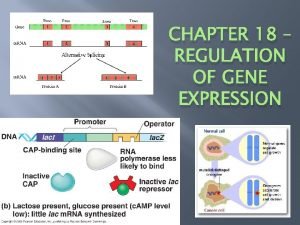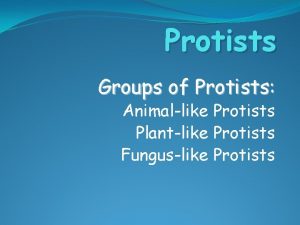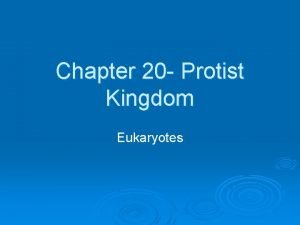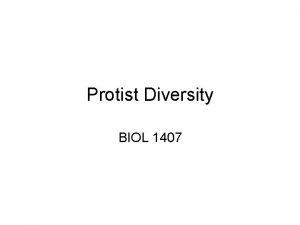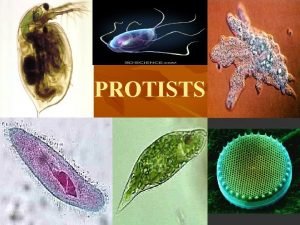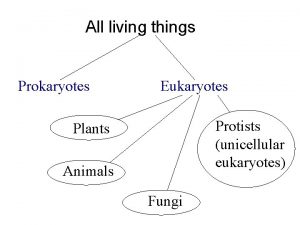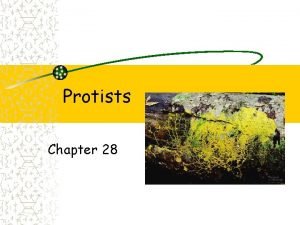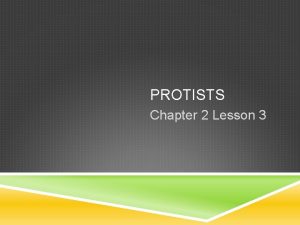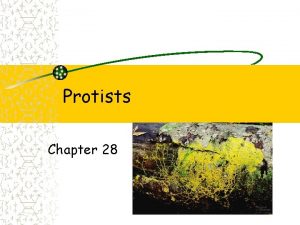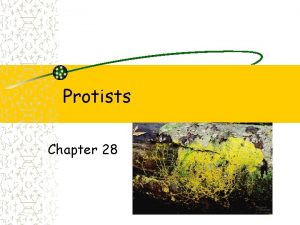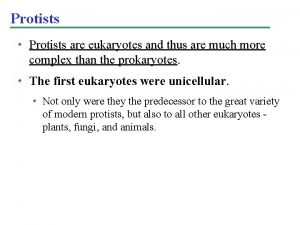Protists Protist are single cell eukaryotes A few















- Slides: 15


Protists • Protist are single cell eukaryotes. • A few forms are multi-cellular. • Complex internal structure: a single cell must do all the functions. • Can be divided into: 1. plant-like 2. fungus-like, 3. animal-like forms.

1. Fungus-like Protists • Water molds and slime molds • Heterotrophs: they get food and energy from other organisms. • Many are decomposers of dead organisms. • Produce motile (moving) during part of their life cycle. cells • surround and engulf bacteria as food.

• Slime molds live as separate cells most of their lives, feeding on bacteria. When conditions get harsh, they aggregate into a multicellular slug, which migrates to a new location. The slug then forms a fruiting body that generates spores. The spores from the fruiting body are very hardy.

• Slime molds can be rather large and colorful.

More Fungus-like Protists • The water molds include some of the worst plant diseases.

2. Animal-like Protists • The animal-like protist are classified according to how they move: • • amoeba-like ciliated Flagellated sporozoans

Amoebas in Action Amoeba-like protists move by extending pseudopods, part of their cytoplasm, then pulling the rest of the cell along behind. They can surround and engulf their food this way. Some amoeba-like protists have hard shells.

Ciliated Protists • Cilia are small hairs surrounding the protist’s body. The cilia beat in a synchronized pattern to cause movement. • Paramecium is a typical ciliate.

Flagellates • Flagellates have a small number of long flagella, long whiplike hairs that beats to propel the cell. • Some nasty parasites are flagellates, including Giardia lamblia, which causes diarrhea and which is found in most of the surface waters of the US. Another is Trypanosoma brucei, which causes sleeping sickness in Africa. Also Trichmonas vaginalis, a sexually transmitted disease.

Sporozoans • Sporozoans are animal-like protists that have part of their life cycle inside the cells of their hosts. • The most important example is Plasmodium, the parasite that causes malaria. Malaria kills 1 -2 million people each year. • Mosquitoes are part of the life cycle. They suck blood from infected humans, ingesting the sporozoans. The sporozoans undergo sexual reproduction in the mosquito’s gut. • When the mosquito bites another person, the sporozoans infect the blood and liver of the host. The parasites multiply asexually inside the red blood cells, destroying them as they leave.

3. Algae (plant-like) • The plant-like protists are called algae. Most are single-celled, but a few form large multicellular seaweed. • The plant-like protists have chloroplasts. Some, like the Euglena, also have flagella for movement. • Some, such as the diatoms, have calcium carbonate (chalk) or silica shells.

Algae Blooms Algae blooms are the sudden growth of a large population of single celled algae. They occur near the coastlines, with the algae feed on fertilizer runoff and sewage. Algae blooms reduce the oxygen in the water, killing fish and other organisms. Some of the algae also secrete toxins.

Multicellular Algae • The multicellular algae are commonly called seaweed. They can be classified into red, brown, and green algae. All have chloroplasts, but the pigments in the chloroplasts vary, giving the different colors.

Green Algae • The green algae are the ancestors of plants. The term “plant” implies living on the land or derived from plants living on the land. Green algae and plants have very similar chloroplasts. • Green algae have some unicellular.
 Adverb of little
Adverb of little Insidan region jh
Insidan region jh Single celled protist
Single celled protist A few vai few
A few vai few Few, a few, little, a little exercise
Few, a few, little, a little exercise Complete the sentences with a few or a little
Complete the sentences with a few or a little What is the smallest organelle in a cell
What is the smallest organelle in a cell Protists cell wall
Protists cell wall Meaning of multicellular
Meaning of multicellular Dna transcription
Dna transcription Lac operon inducible or repressible
Lac operon inducible or repressible Prokaryotic promoter vs eukaryotic promoter
Prokaryotic promoter vs eukaryotic promoter Characteristics of eukaryotes
Characteristics of eukaryotes Fine structure analysis of eukaryotes
Fine structure analysis of eukaryotes Translation in bacteria vs eukaryotes
Translation in bacteria vs eukaryotes Prokaryotes vs eukaryotes gene regulation
Prokaryotes vs eukaryotes gene regulation
